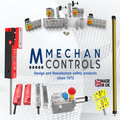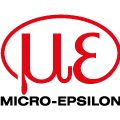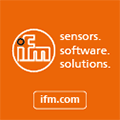
Posted to News on 29th Nov 2006, 18:58
Handheld scanner simplifies 3D scanning
A new concept in 3D scanning is being introduced to the UK by modelling and prototyping specialist Unimatic. The Handyscan 3D is a handheld mobile scanner that is said to make creating a 3D digital scan as simple as playing a torch over a target item.

The Handyscan is said to represent a new technology platform to support the full range of 3D applications: from rapid prototyping for product development to dimensional quality control; from medical and dental applications to artefact scanning of artworks and museum pieces; spatial, multimedia, culture and recreational industries. It could also be used, for example, when creating nests or grippers for the automated handling of components or sub-assemblies with complex forms.
In use, the Handyscan is pointed towards the object to be scanned and moved about so that a self-positioning cross-hair sweeping laser is moved over the entire surface. This generates a constant stream of positional data, the initial value of which is used as a datum from which all other data are measured. Software instantly constructs the data into a 3D scan or virtual model of the object. A surface optimisation algorithm and other features of the program ensure an accurate scan, while rendering for visualisation maximises user-friendliness.
The Handyscan 3D digitising software is said to be easy to learn and to integrate with existing systems through its Windows compatibility and ability to export files in standard formats such as Geomagic Studio and Qualify. Other software packages planned for imminent integration include Polyworks, Catia v5, Prelude Inspection and Rapidform.
In use, the software automatically adjusts for the distance between the Handyscan and target, so there is no need for a measuring arm or CMM. This makes operation a completely natural action that produces reliable and accurate virtual models with the minimum of training or technique. The software is easily adjusted to the colour of the object being scanned, although for some surface materials a coating may be necessary before scanning commences.
The Handyscan is designed to be balanced in all orientations so that its use is ergonomic; it is configured as a plug-and-play peripheral and even has a built-in power supply so users do not even have to check on batteries. Calibration is required only occasionally: Unimatic recommends once a year for normal industrial use.
Martin Stevens, MD of Unimatic, says: "3D scanning is becoming commonplace in more and more fields of endeavour, often replacing manual craft skills, or improving production quality from a level of 'hit and miss' to one of supreme accuracy guaranteed every time. It is timely, therefore, that we are now able to offer such a user-friendly procedure as that represented by Handyscan."

















